We’ll start here.
Did I ever tell you about this snowy egret and tri-colored heron that hang around and hunt together?
Several weeks ago I started noticing that both these birds showed up at the same time each morning in that little bay across the way. I would photograph them just on the basis of their being birds in the backyard. After several days, it dawned on me that they were often together, but I laughed off my imaginative portrayal of them as a couple.
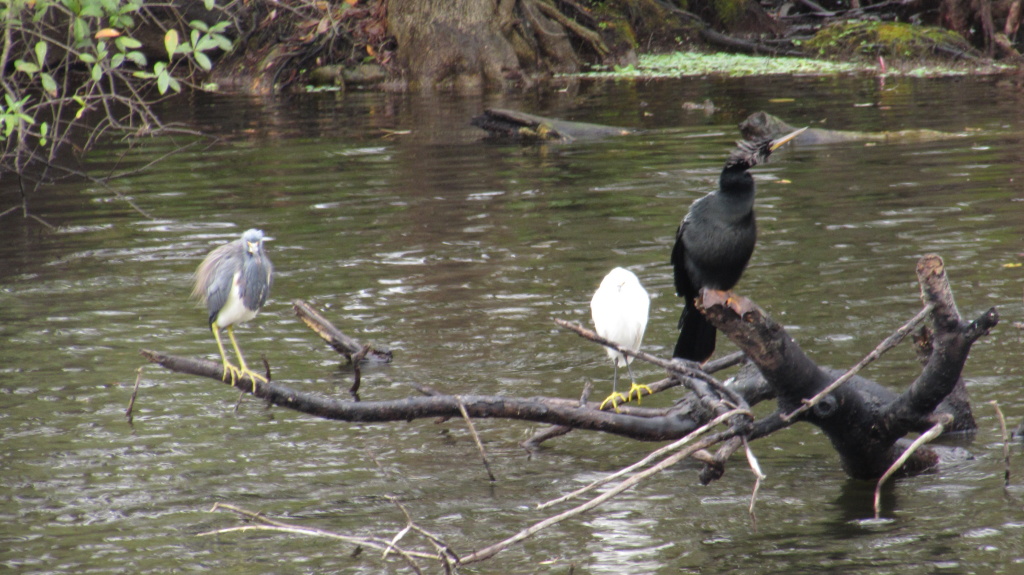
Still, the idea wouldn’t go away. One day, I saw an interesting exchange. The heron was standing quietly at a distance. The egret flew up and landed quite close, The heron startled, then began ruffling the waters as it does to eat whatever it eats. The egret followed every time, and rushed the bird whenever the heron slacked off. A few days later, the heron returned the favor, flying close, just above the head of the egret so it startled.
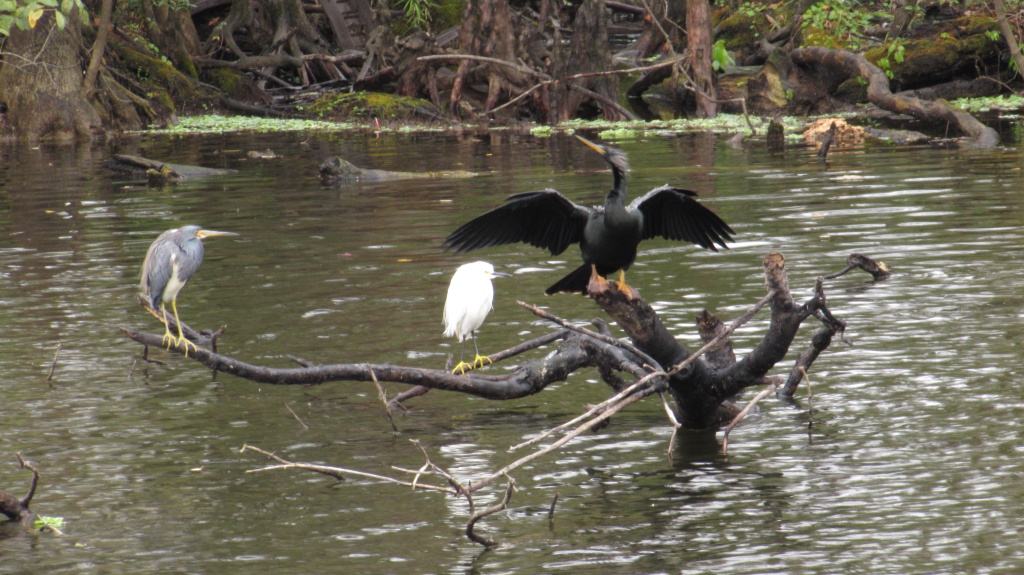
So, it I thought perhaps they had a mutually beneficial hunting arrangement. What fascinated me was that though they had what appeared to me to be a combative relationship, they persisted in being together. If one flew off, the other flew to follow. Even to all the way up the water.
So, today, they both hung out on the tree in front of that little bay that they like. An anhinga stood with them, extending its neck and making its stay-away call.
Well, but I couldn’t, you see. So, the anhinga gave up and flew off in a huff. I don’t like to disrupt the animals because I don’t want them to consider this little oasis inhospitable and stop putting on my daily show. Also, of course, I want the habitat there for their preservation.
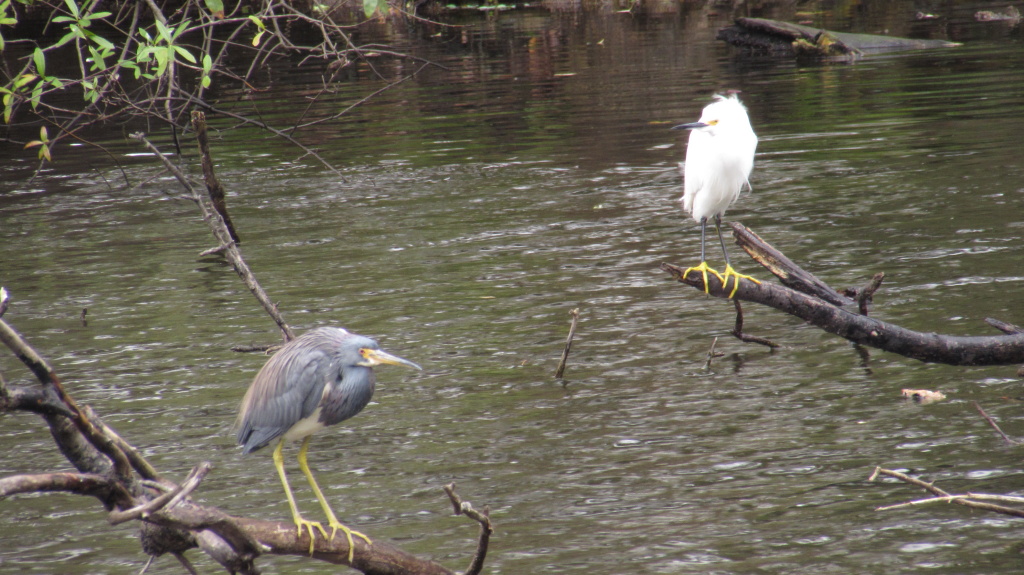
I believe I now have evidence of a non-hunting relationship between these birds. After not being around together for several weeks, they showed up and hunted together. When the snakebird left, the heron jumped away to another branch, about five feet. The egret jumped to maintain the distance between them.
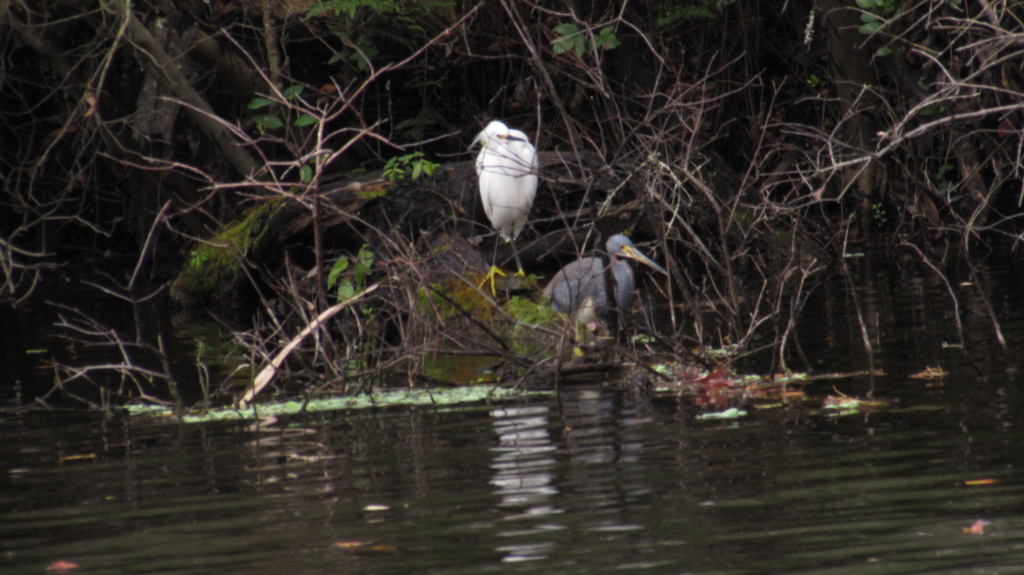
Then the heron flew back into the bay to hunt. The egret followed.
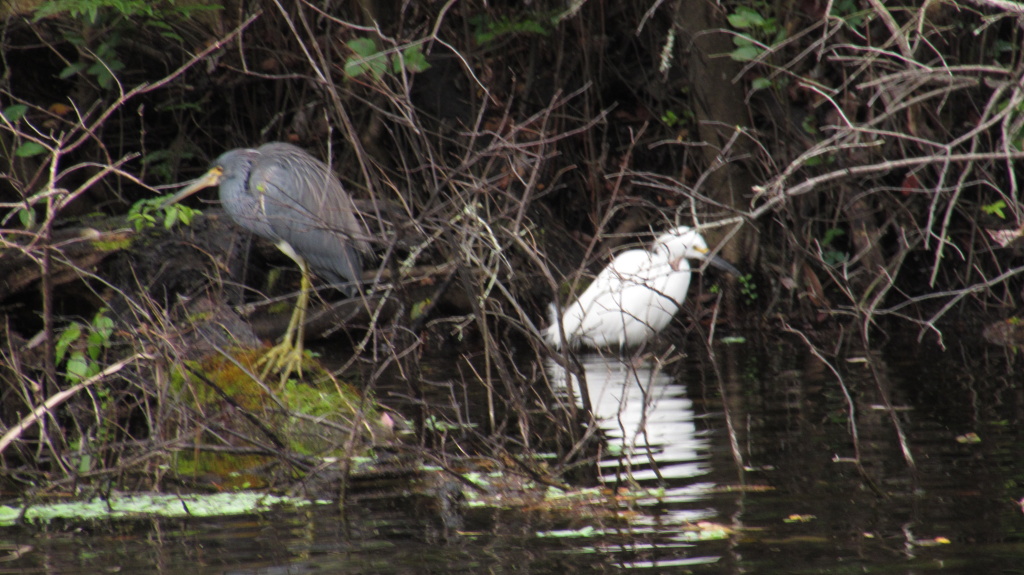
After a little bit, they moved to the shore, closer to me. Having noticed me, the tricolored, who was today’s leader (they tend to switch roles), moved off to be further away. Shoulders hunched against the wind, the egret followed slowly.
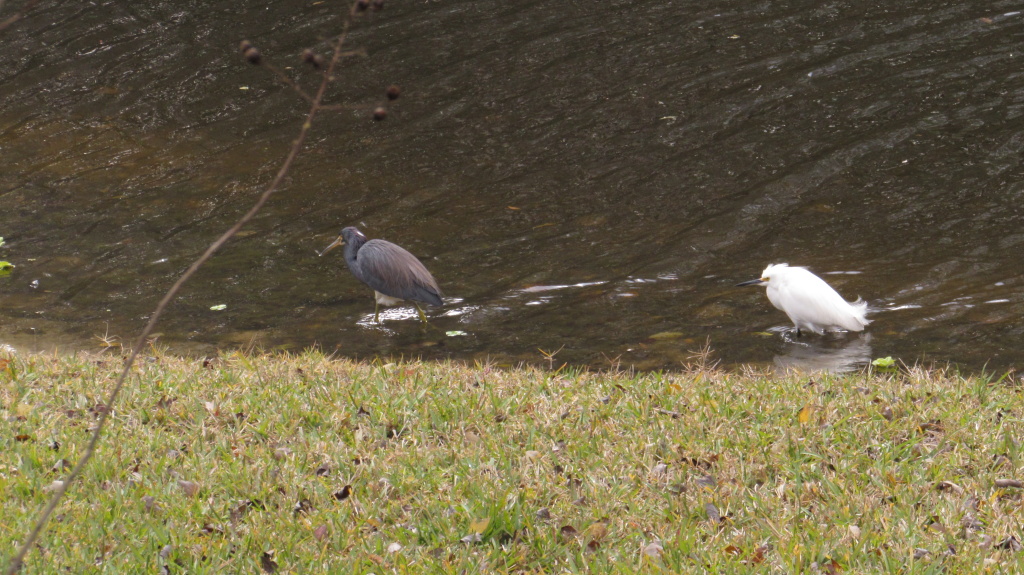

Then it picked up the pace, closing the gap between them. I know that these birds are supposed to be the same species. I wonder if they can mate and if they can, what bird would be produced? The egret flew into a nearby tree and the heron remained below, on the shore.
The wind was getting to be a bit much – quite cold day – so I left them to it. But not before I took this. The sun was fighting the dark clouds and it created this warm orange-yellow light all over the backyard.
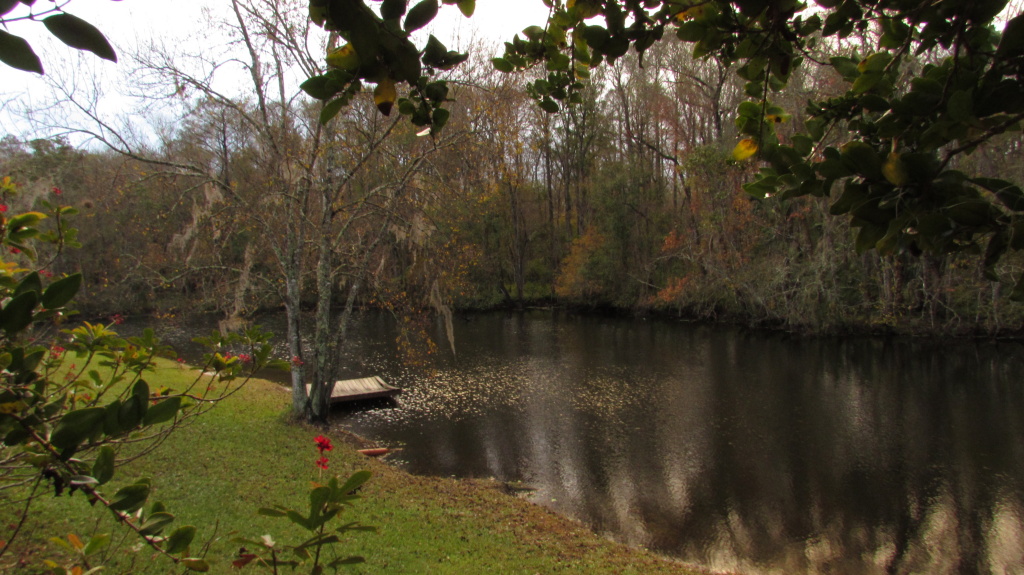
In the afternoon, for a variation on the theme, I found this eastern phoebe looking bright and sunny in the pomegranate tree that is failing to thrive. This one was part of a pair hunting together. I often see them singly or in a very active flock, flying down from the oak tree to the ground and back again.
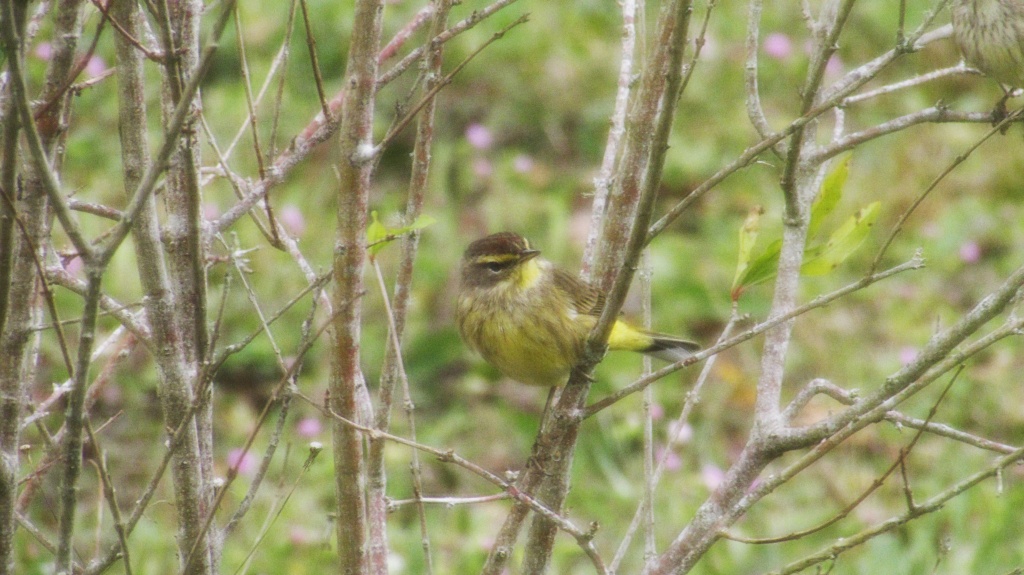
Not today. These hunted together and rested together. I liked seeing them together because I have not yet been able to tell how much yellow the bird has because they blend so well in the grey-brown of the backyard. And I often imagine I see more color than there is. Clearly the amount of color varies and I likely do see as much as I think I do.
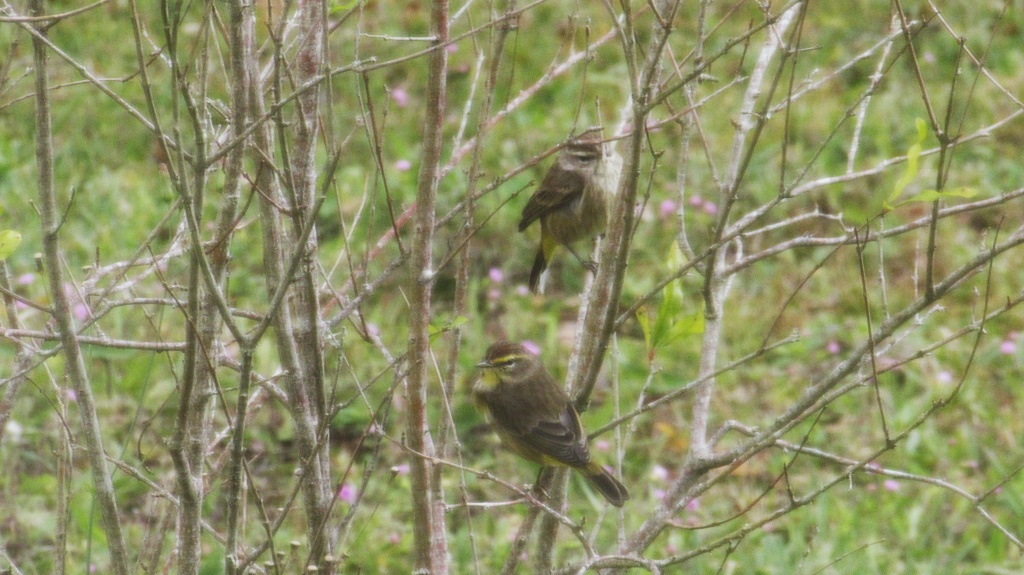
I’ve been wanting a photo of all the backyard ducks near each other. In the afternoon, they were traveling together for some reason. They are a bit closer in size than they appear in my memory. The mallards are always more devoted to each other than the muscovies. I’ve never seen a mallard alone, while the muscovies send out scouts to a location before they all come by. The entire group circled in front of me then moved on.
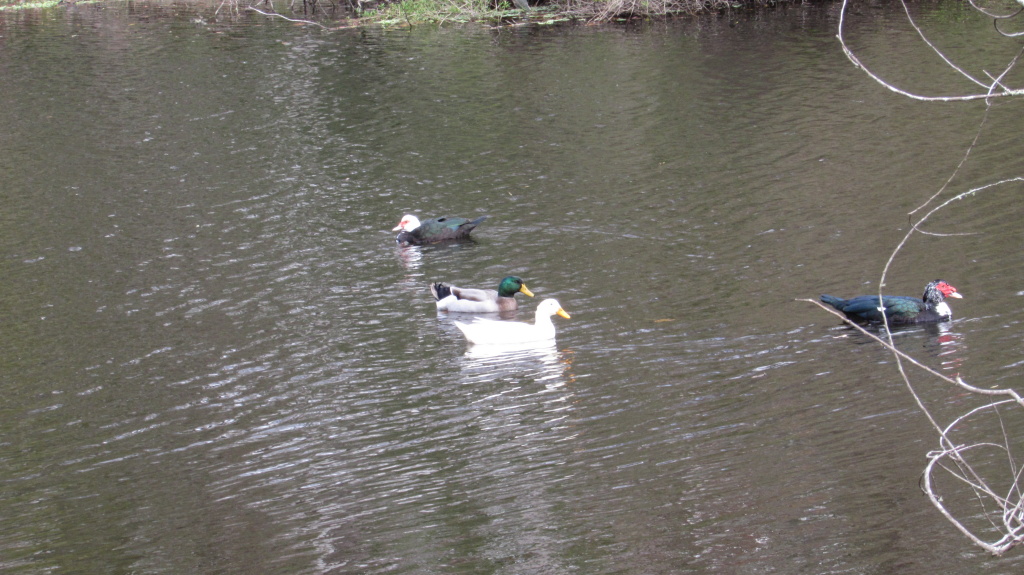
I took few and poor images because I caught a glimpse of movement out of my eye and found the green heron attentively still. He’s my current mystery. I want a closer up view of him to more accurately judge the color. From a distance, as he moves along the small coves and bays, he looks quite brown. When the sun hits, there’s a hint of moss green, but in every photo I have of him (and this is not a still from video), he looks quite blue with an attractive hint of purple.
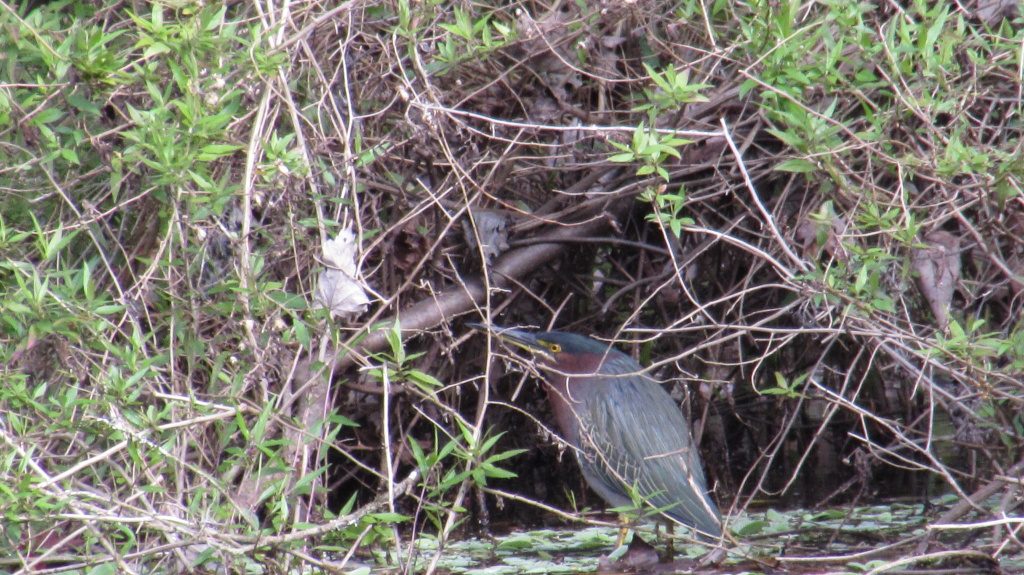
This applesnail shell, well worn appeared from beneath the fallen leaves. It may have been there for quite a time because it looked stripped.
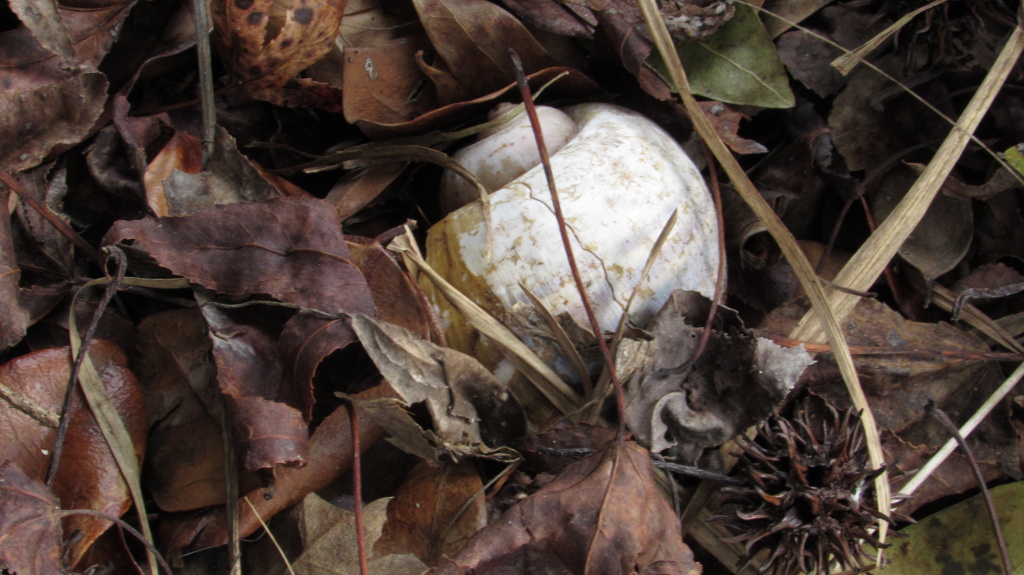
I took it up to the grass to get a picture of that color and irregular stripes. Nature designs the best patterns. Evidently, people go hunting for and collect shells of this kind.
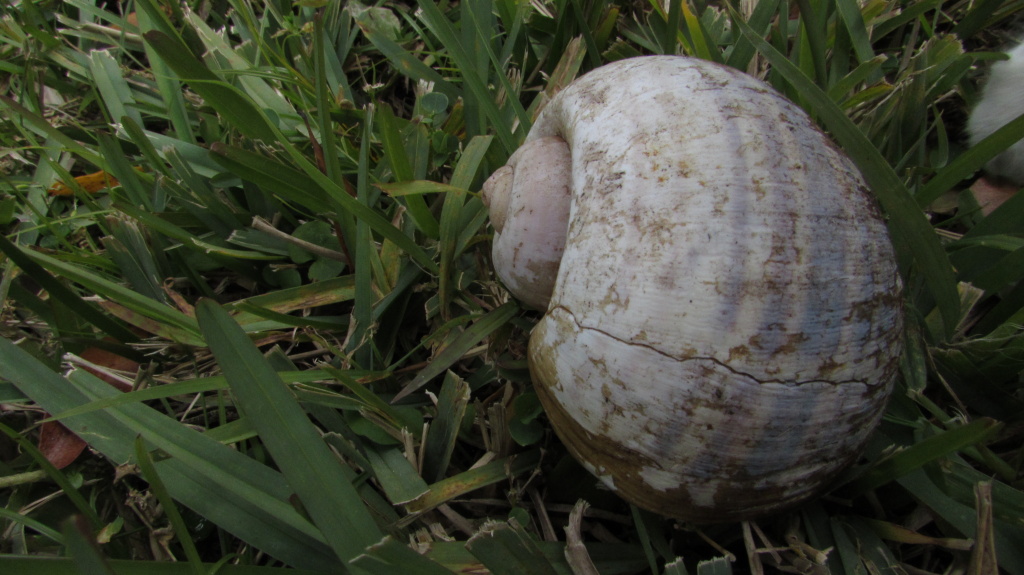
Since we’re talking pairs, how about this pair. Blue has had a productive tomato season. Plus, since the recent storms, much of the trees have lost their color and the backyard is becoming quite brown.

The tomatoes and the peppers add a nice touch of bright and cheer when it gets overcast and chilly.
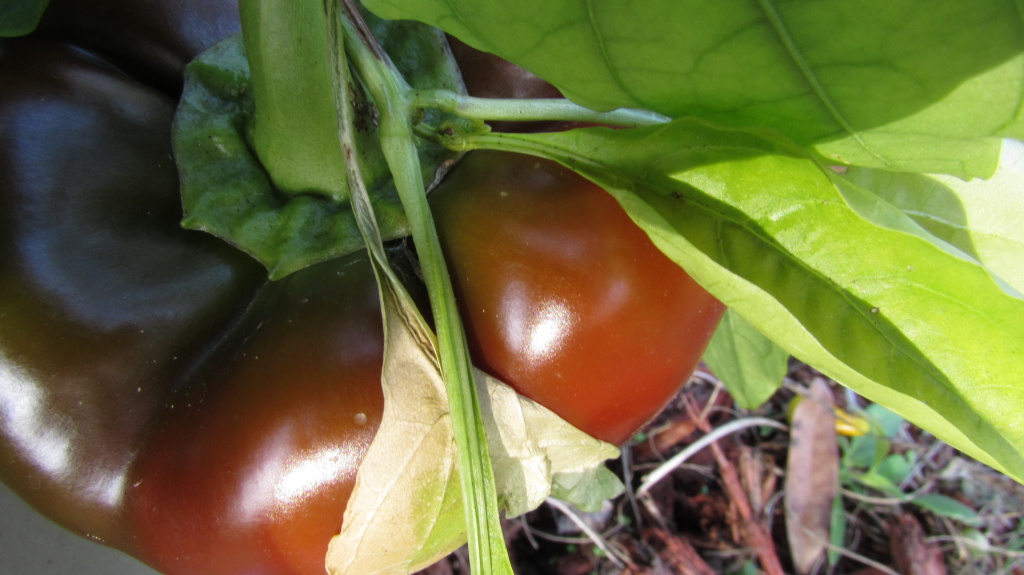
Alone, the very picturesque limpkin closed the backyard’s contribution this afternoon. In one of its least successful excursions that I have observed, it found and opened a clam, waded briefly and then gave up.
Regretfully, nothing today on the otter watch.
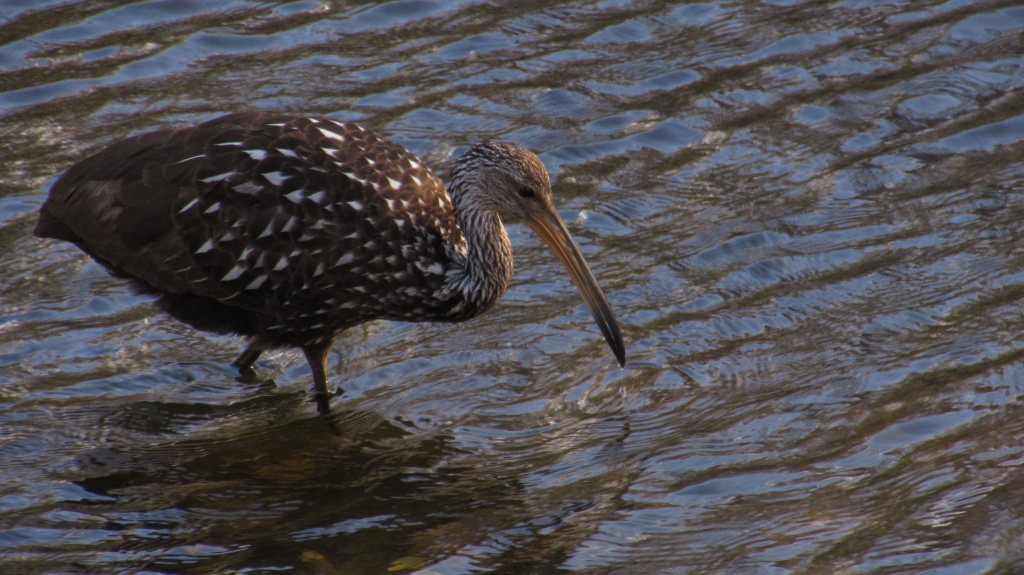
More tomorrow.
- Aperture: ƒ/8
- Camera: Canon PowerShot SX510 HS
- Focal length: 4.3mm
- ISO: 200
- Shutter speed: 1/20s